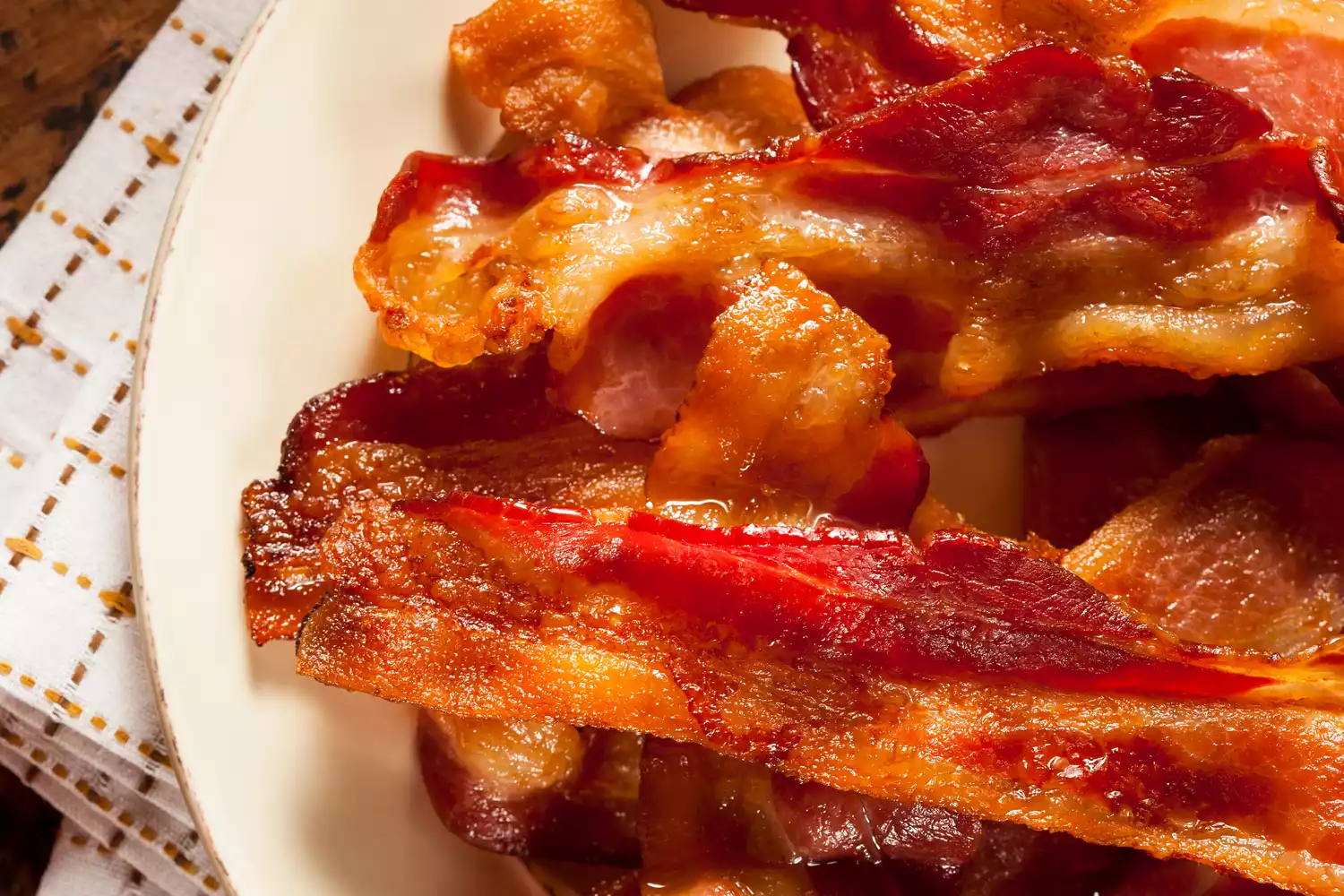My first day as a breakfast cook at a hotel in Maine was life-changing when it came to my bacon-cooking skills.
The other cooks and I gathered before dawn to prepare a breakfast feast that had to be ready by the time the
first few sleepy guests hit the dining room at 6 a.m. sharp. We whipped dozens of eggs with cream so we were
ready to make batches of scrambled
eggs every 20 minutes throughout the morning. Flats of fresh blueberries stood ready next to the pancake batter, waiting for the griddle to heat up.
The omelet cooks chopped bell peppers and tomatoes and
seasoned their pans for service. And next to the ovens, we lined a three-foot-tall stack of baking sheet pans
with parchment paper filled with even rows of bacon slices. About half an hour
before breakfast began, we loaded those sheet pans into the ovens, so that by the time the restaurant opened,
the aroma of crisp bacon had permeated the entire dining room. It was impossible to resist; we flew through
cases of bacon every day.
That method of cooking bacon was
by far the most efficient way to sate the cravings of a hundred or more people each day. Each baking sheet held a dozen strips
of bacon, and with the convection fan running in the oven, we were able to cook five trays at once in just 10
minutes. The bacon cooked evenly, and the high heat ensured it crisped nicely. We’d pull the pans from the oven,
gather all the strips in a single neat swipe of a pair of tongs, and carefully tilt the baking pans to capture
all the rendered fat. Then, we’d load up more bacon-topped parchment sheets onto the pans, and hit the ovens for
another round. In between baking sessions, we snacked on bacon and blueberries and sipped coffee. Even with all
the bacon fat blisters, it was glorious.

Brent Hofacker / Getty Images
Today at home, the oven is still my favorite way to cook bacon if I need more than a couple of slices. I top one or two rimmed baking sheet pans with sheets of parchment and a row of bacon slices, then bake them at 400°F for 15 minutes. It’s just as simple and efficient as it was at the hotel. I’m not the only fan of this cooking method; F&W’s Justin Chapple also cooks bacon in the oven. He places the bacon strips on a metal rack in the pan, so the fat renders in the baking sheet. If you don’t have a metal rack, he has a trick: fold a large sheet of aluminum foil into an accordion, then spread it out the length of the pan to stand in for the rack.
The oven is my preferred method for cooking bacon, but don’t try it unless you have a baking sheet with at least a half-inch rim on every side to capture all the rendered bacon fat. And be careful when removing the pan from the oven with sturdy oven mitts – just one wobble and you’ll splash melted bacon fat all over your oven and floor.
If the oven isn’t an option, there are, of course, other ways to cook bacon. Here are three more ways to cook bacon.
On the stove
The stove may be the most familiar way to prepare bacon, but there are still nuances to keep in mind. First, resist the urge to cook bacon over high heat. Bacon will take a few minutes longer to crisp up when cooked over medium, but the less intense heat allows for more fat to render from the bacon, so it cooks more evenly and crisps up better. Place the bacon strips in a single row across the pan, and as the bacon cooks, watch for pieces that cook faster than others and use tongs to rotate them to the center or edges as needed. Flip the bacon after about five minutes, depending on its thickness and how floppy or crisp you prefer it to be, then let it cook on the other side. A good splatter screen is essential for keeping your stove, countertops, and floor free of sputtering bacon fat.
In the microwave
My friends who are relentlessly health conscious swear by the microwave for cooking bacon. You can use this method with a microwave bacon tray, but if you don’t have a tray, swap in a pile of paper towels. Place at least two layers of paper towels on a microwave-safe plate, top it with bacon in a single layer, and top the bacon with two more layers of paper towels. Microwave the bacon on high for three minutes, then check the bacon; the cooking time will depend on the thickness of the bacon and the power of your microwave. Be careful when handling the plate; it will be hot. The paper towels soak up the fat and this method reduces the bacon smell floating in the air long after breakfast.
In the air fryer
An air fryer is essentially a convection oven like the ones I used at that hotel in Maine, and is ideal for cooking bacon quickly and evenly. Place strips of bacon in an even layer in an air fryer heated to 400°F. Cook thick-cut bacon for 10 minutes, and thinner slices for 7 to 8 minutes. All that air circulating around means there’s no need to turn the bacon halfway through cooking. Be sure to drain off the rendered bacon fat in between batches.
After you cook and eat your bacon, you’ll have plenty of leftover bacon fat, which is gold in the kitchen. Store it in a grease container, jar, or other airtight container in the refrigerator, and use it in place of oil, lard, or butter in recipes like these toasted croutons, this pasta sauce, these homemade flour tortillas, or anywhere bacon’s smoky flavor will enhance your cooking.
Advertisement


